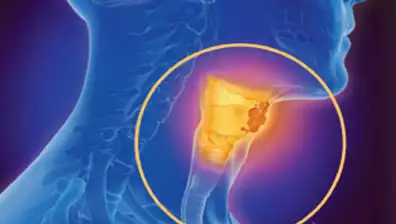
Ayesha, a 42-year old mother, was relieved to be diagnosed with asthma, but when her symptoms persisted, a CT scan revealed a rare tumour in her windpipe. After a complex surgery, Ayesha cannot breathe effortlessly. The surgery involved resection of the windpipe and stitching the ends together. Misdiagnosis of tracheal tumours as asthma is common.

MUMBAI: The relief in 42-year-old Ayesha’s laughter is unmissable. Until recently, the mother of a four-year-old couldn’t finish sentences without feeling out of breath. For months altogether, she slept in a recliner, unable to lie down. A diagnosis of asthma, in fact, came as a relief because she thought she would finally start feeling better with medication. But when that didn’t happen for nearly two years, the Kuwait resident hailing from Mumbai, started fearing that something more serious was at play.
Last August, a CT scan performed by a Mumbai doctor revealed a startling diagnosis: Ayesha had a tumour growing inside the trachea or windpipe. Primary tracheal (windpipe) cancers are rare and account for only 0.2% of all cancers. The tumor, taking up 90% of her windpipe, proved the actual cause of her breathing issues, proving the initial diagnoses of asthma and bronchitis incorrect. After a complex surgery done followed by one-and-a-half-month-long radiotherapy completed recently, Ayesha is now able to talk and breathe effortlessly.
The tracheal tube is large and symptoms of blockage do not occur until the tumour occupies 50%-75% of the diameter, said Dr. Deepak Namjoshi, director of Criticare Asia Hospital. He said Ayesha presented with severe breathlessness called stridor, a condition that can lead to death if not treated promptly. A bronchoscopy with biopsy confirmed it to be rare tumour - adenoid cystic cardinoma that has a reported incidence of 4.5 case/lakh individuals. After discussion, doctors decided surgery was the best course of action. Ayesha along with Dr. Shravn Shetty and anaesthesia team led by Dr Chitra Pitale at CritiCare Asia Kurla, said since there is no prosthesis or implant to replace the trachea, the surgery is crucial. "Any mistake is fatal for the patient, on table being most risky but the risk stays for the least five days," she said.
Challenges for the surgery begin with anesthesia since the wind pipe was nearly completely blocked. The surgery has to be started with local anesthesia and controlled sedation is given eventually. "The surgery was complex, involving resection of two-third circumference of the windpipe of around 3 cm. Later, the two ends were stitched together," Dr. Eshpuniyani said, adding that they kept the chin of the patient stitched to the chest for some days to avoid any sudden jerk of the neck that can give away the stitches and cause death instantly. Post surgery, Ayesha was removed from the ventilator shortly after and she went home after five days.
Ayesha said she consulted with at least seven physicians and pulmonologists and relied on inhalers for two years before receiving an accurate diagnosis. Several global studies have shown that tumours of trachea are often misdiagnosed as asthma and can remain undetected for months or years.
(Patient name changed)